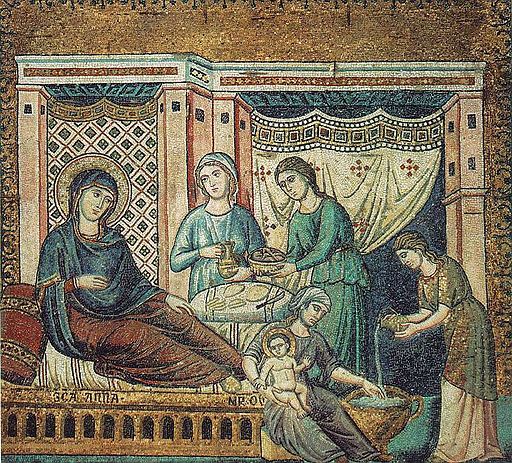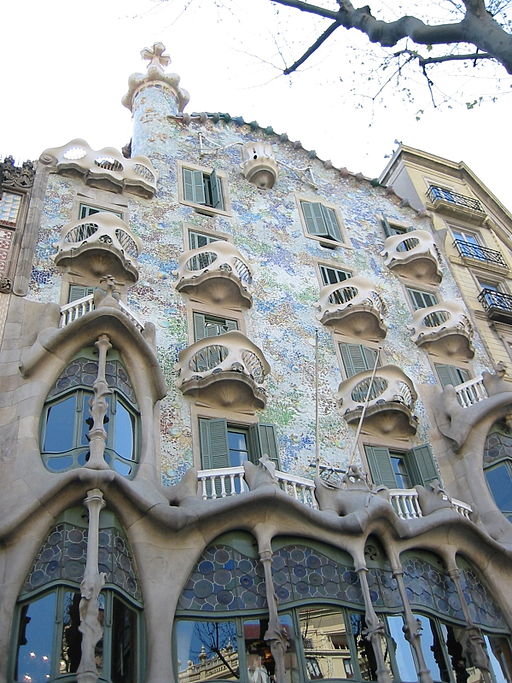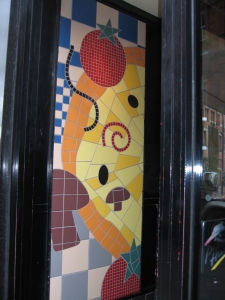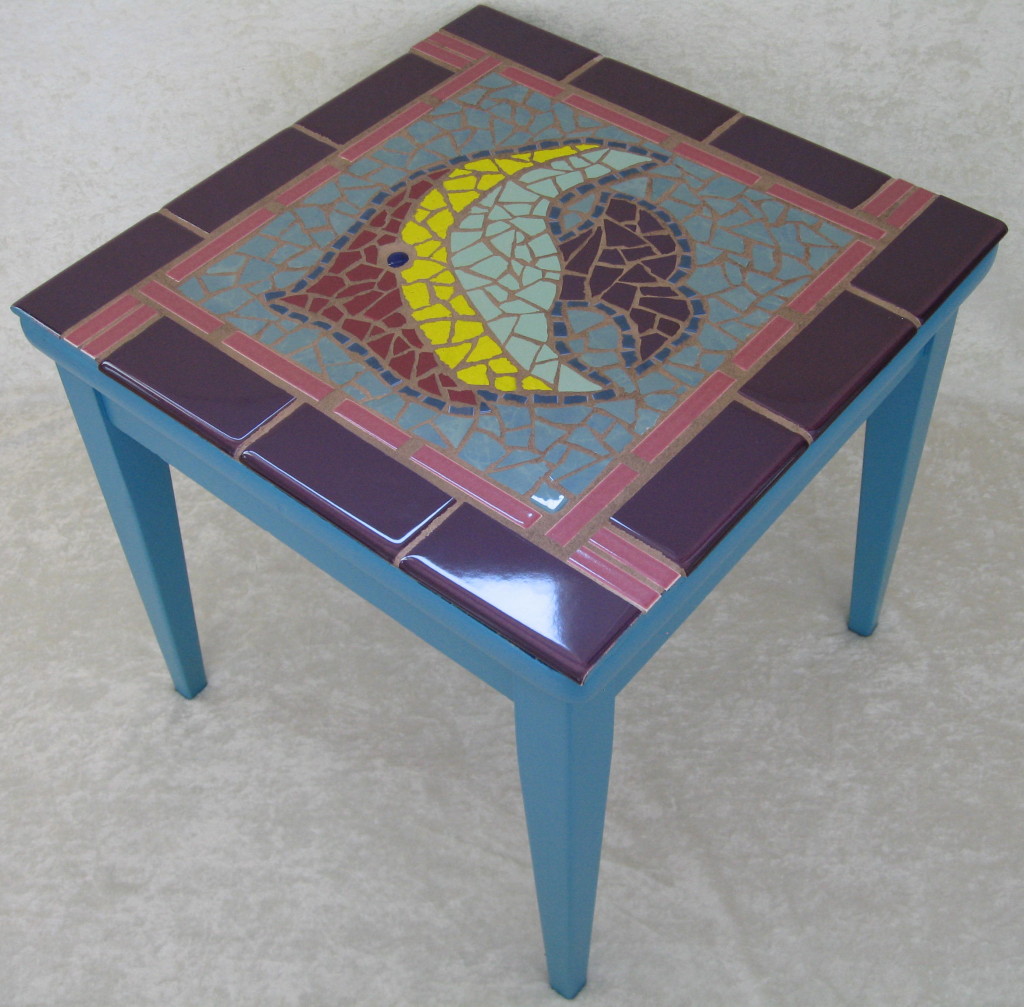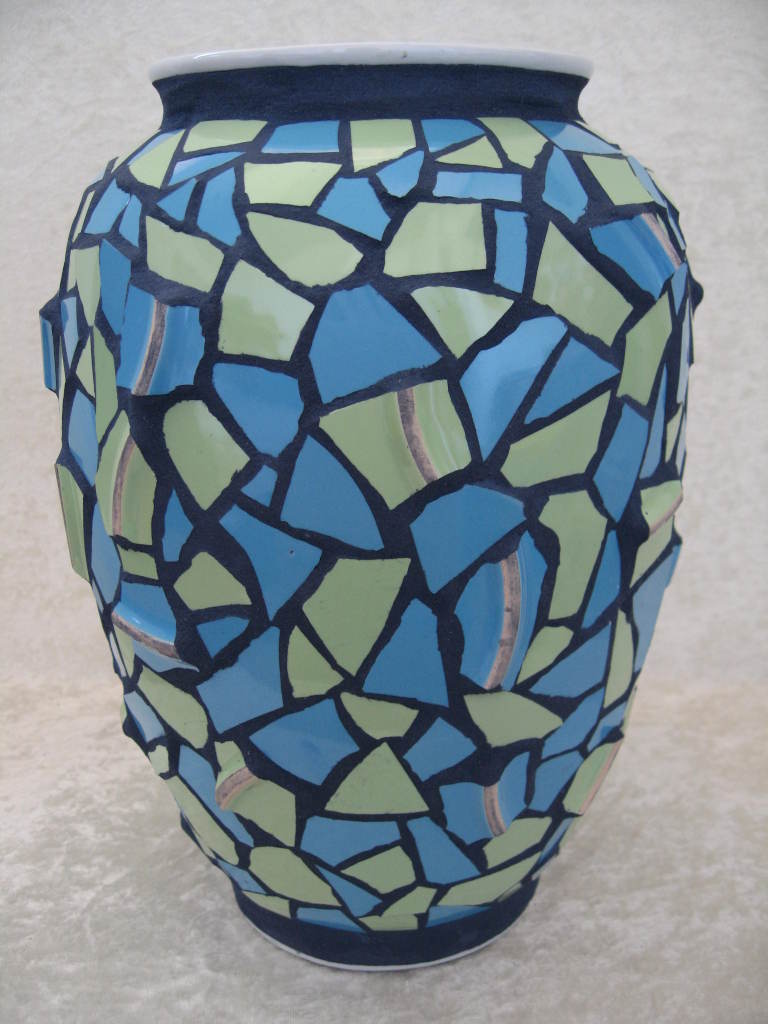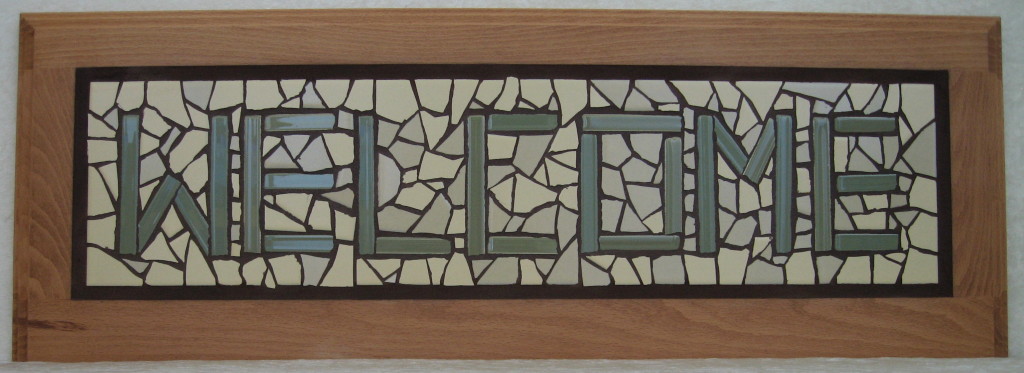Throughout history, regardless of era or region, one constant is that people create art. You’ve probably seen examples of one of the oldest arts, mosaics, which are both ancient and modern. The oldest example is from approximately 3,000 BCE in the area that is now Iraq. Newer samples can be found in public spaces, art galleries, online and on many remodeling or decorating shows on TV.
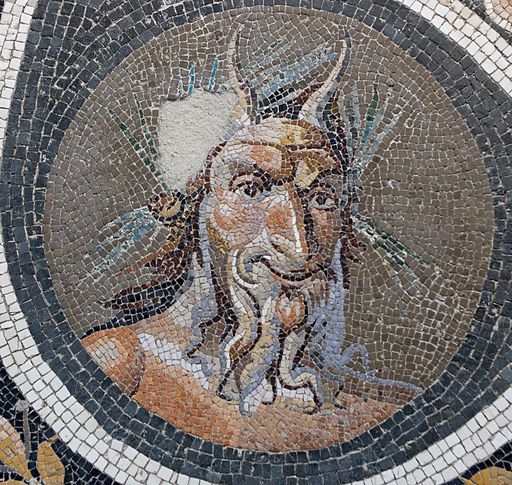
Pavement mosaic with the head of Pan. Roman artwork, Antonine period, 138–192 CE. From a villa in Genazzano wich may have belonged to Marcus Aurelius and Lucius Verus. Photo Credit: Marie-Lan Nguyen (2006)
A mosaic is a design made from many small pieces of material set in mortar. The art of mosaics has evolved over the past 5,000 years, with changes in the subject matter and materials. But certain things have remained the same. Mosaics can be functional and/or decorative, and their longevity comes from the durability of the materials used. Whether composed of stone, clay, smalti, glass or gold, the beauty of the design and workmanship can last for millennia if not deliberately destroyed. Even nature can’t always destroy them. Mosaics have been found in Pompeii and Herculaneum under the ash and rock after the 79 CE eruption of Mt. Vesuvius buried them for about 1,500 years. Roman mosaics are still being discovered in the United Kingdom even though the Romans left about 1,600 years ago.
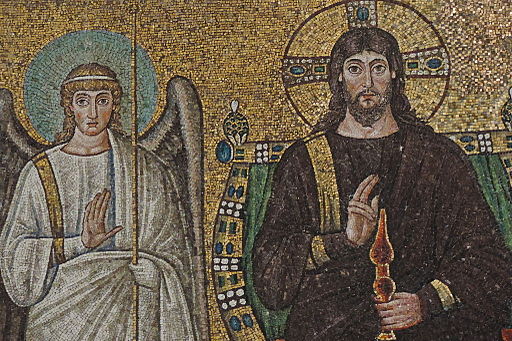
Mosaic of Christ and the angels. Basilica di Sant’Apollinare Nuovo, Ravenna, Emilia-Romagna, Italy, 6th century. Photo Credit: Mattis.
For most of history, mosaics have been created on floors and ceilings as well as on interior and exterior walls. Designs ranged from the abstract to those that have so much detail that they look like a painting rather than a collection of pieces. During the period when almost all art was religious art, that was also true of mosaics and many surviving mosaics are in churches.
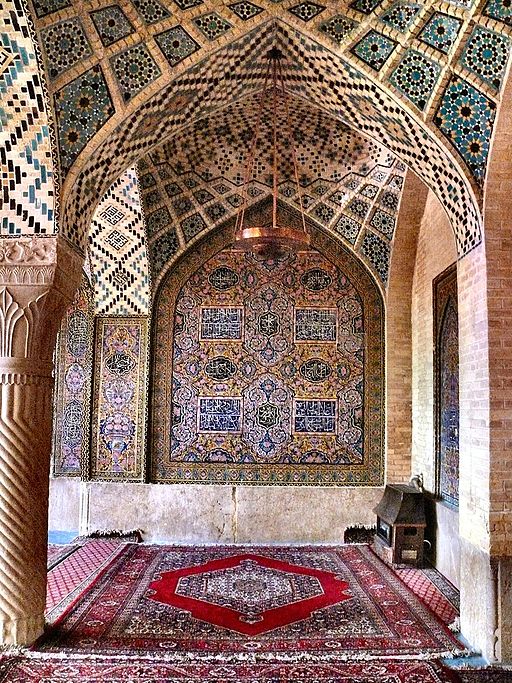
Praying room of the Nasr Ol Molk Mosque — at Shiraz, Fars province, Iran, Example of Qajar era architecture. April 2008. Photo Credit: dynamosquito
The creation and use of mosaics tapered off when artists started creating frescoes instead. Take it from me, creating mosaics is time consuming, and frescoes were quicker and easier. But once again mosaics rebounded and I would date the modern age of mosaics from the time of Antonio Gaudi (1852-1926) in Barcelona, Spain.
Although Gaudi generally gets all the credit, he worked with other designers and artisans who deserve recognition. While there was a sameness to all of the previous ages of mosaics, Gaudi brought innovation, new ideas and new methods and materials. There was also a liberating feeling to Gaudi’s work. No longer were all mosaics expected to follow the same patterns. If you wanted to use different materials, Gaudi’s work said that was okay.
I’m going to link you to the Wikipedia page for mosaics because it is a great source for photos. Even if you don’t read a word other than the photo captions, it gives a great visual overview. You can see how you feel about the classical styles compared to the more modern, or if you prefer the abstract or the representational.

Part of the Syuxtun Story Circle mosaic in the sidewalk near the pier, Santa Barbara, CA. Photo Credit: Cathy Hanson
I started creating mosaics 15 years ago because I needed a creative outlet. I’ve always needed a creative outlet, and have tried many different things over the years. Sewing brings out my rage, crochet hurts my hands and my mind wanders and I lose count of the stitches, when making jewelry I found myself hunched over the tiny pieces and tiny tools, and when I tried working with wood I discovered I can’t cut a straight line without a huge financial investment in tools.
Then I found mosaics. From all the other creative projects I learned that I love color and shine and matte and texture. I wanted something portable that didn’t require expensive tools or materials, something I could put down and pick up later without losing my place. I wanted something that didn’t have the stress of the expectation of accuracy. The unexpected bonus – I get to smash tiles with a hammer. Serious stress relief. I’ve included photos of a couple of pieces I’ve made. They’re not classical mosaics, and they probably won’t last 5,000 years, but I’m stress-free!

